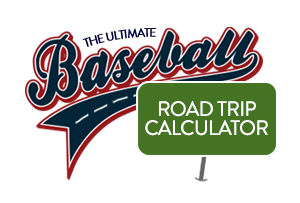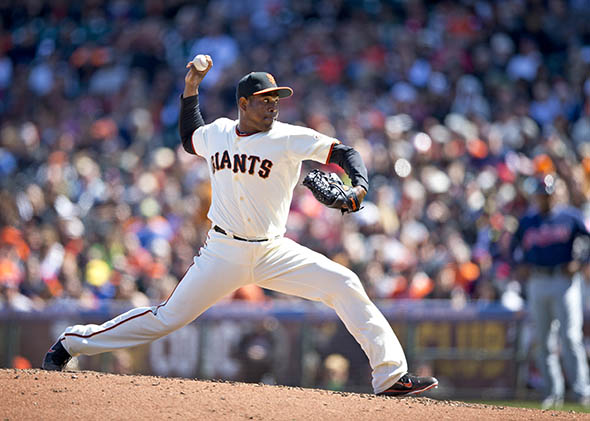Take Me Out to the Ballpark—All of Them
How to visit all 30 major-league stadiums in 30 days.

Caution: Please Read I Don't Care If We Never Get Back Before Attempting


TO ALL 30 BALLPARKS IN 30 DAYS
2. That team's home schedule will appear below the map. Select a highlighted date.
There are 30 major-league teams and there are 30 days in a month. Baseball is our national pastime. Driving is our other national pastime. According to my friend Ben Blatt, the logic was simple: Completing a 30-day journey that would take us to all 30 ballparks, entirely by car, was basically our duty as young Americans.
It seemed impossible to me, but Ben, who loves baseball almost as much as he loves math, had successfully devised an algorithm to calculate the “optimal” baseball road trip. By optimal, he meant the road trip that completed the stadium tour in fewer than 30 days while maximizing the amount of time between cities, for ease of travel. He even published a paper on it.
If visiting all 30 stadiums in 30 days sounds like a great idea to you, you’re in luck. The tool above, constructed by Ben, allows you to build your own road trip. Pick your home stadium and a start date, and the algorithm will shoot back a custom-made road trip that will take you to every stadium in America, and back to the city where your trip began, in 30 days or fewer. The math allows four hours for every game, more than enough to stay in your seat from first pitch to last out for most contests (the league average last year was 2 hours and 58 minutes). Provided, of course, that none of the games are delayed by weather, or worse, rained out—either outcome can put a serious crimp in your carefully laid plans.
Be advised: Not every itinerary Ben’s machine spits out will be the shortest possible trip; the results are intended to minimize risky driving. The algorithm takes pains to avoid hard-to-complete drives, like an 11-hour haul scheduled in a 12-hour window, even if such a leg would cut down on total miles travelled. For most trips, the nastiest segments will leave you with 25 percent of the day for rest time; on your worst day, this could mean having to complete a 20-hour drive—from Houston to San Diego, say—in only 25 hours. But most legs are more manageable, depending on your definition of the word manageable.
It turns out that the biggest obstacle to planning these trips isn’t always getting to out of the way stadiums in places like Seattle or Denver, though that is a challenge. It’s finding the best way to visit stadium-dense regions. There are a half-dozen stadiums nestled in the Northeast corridor, from Boston to Washington, D.C.—but that doesn’t mean they’ll all have home games on consecutive nights. And cities with two teams rarely schedule overlapping home stands. Last season, for example, there wasn’t a single day when both L.A. teams had home games played at least four hours apart.
If you’re looking for the most efficient trip based on this year’s schedule, the fastest remaining route starts in Oakland on May 30 and will require only 16,927 driving miles to complete. That may still sound like a long journey, but it’s actually less driving than the most optimal trip from last year, which is when Ben and I undertook the challenge.
So: Thanks to Ben’s widget, you now have just about everything you need to make your own 30 stadiums in 30 days trip. But that doesn’t mean you should make the trip. Before you start packing the station wagon with sunflower seeds and sunblock, let me tell you a little more about how our trip went down.
On June 1, 2013, Ben and I walked, wide-eyed, into Yankees Stadium to take in our first game of the trip, a Yankees–Red Sox game in which Boston blew out the Bombers, 11–1. After the game, we hopped in our Toyata RAV-4 and set off for Pittsburgh. Then we went to Philadelphia. Then north to Boston. Then down I-95 to D.C. Then up to Detroit. That last drive was a leisurely eight hours. We were just getting started.
The rules of our trip were simple. We had to hit all 30 stadiums before the calendar turned over to July, and had to be inside each stadium for every pitch of every game. No missing the first inning to catch some shuteye after a long drive. No ducking out early to see a local curiosity or visit a far-flung friend.
For Ben, these rules made perfect sense. Completing this trip was the lifelong dream of an ardent fan and admitted math nut. As for me, I was mainly doing it because Ben is my friend, and I figured he’d probably fall asleep at the wheel and die a horrible death if I didn’t go with him. (Ben assured me that the odds of getting in a crash over the course of our 18,000 journey was a mere 0.5 percent.)
I’d also never been on a road trip longer than five hours before, and this trip seemed like a great way to see the country. That turned out to be a wildly naive conclusion. I mean, we did see a lot of the country. But that was about it. Ben’s witness-all-27-outs edict left precious little time between cities—and when the games went into extra innings, things were even tighter. Most of the trip was conducted at breakneck speed, with a series of down-to-the-minute sprints required to keep the game-a-day pace achievable. While the Northeast was a pleasant stretch of five- and six-hour drives, there was little pleasant about a 10-hour drive from Chicago to Baltimore followed by a 15-hour drive to Miami. It turns out one man’s statistically optimized fantasy can be another man’s nightmare.
It wasn’t until about a week into the trip when I truly realized what I’d gotten myself into. That’s when we drove by the Grand Canyon. Not to the Grand Canyon—just by it, straight past a sign that read “Grand Canyon. Exit Right.” According to Ben, we couldn’t risk the 45-minute detour because we’d run the risk of hitting “bad Phoenix traffic” three hours later when we neared Chase Field. Ben was nothing if not a man of accord. In fairness, it was without a doubt the most awe-inspiring sign for the Grand Canyon I’d ever seen.
Ben refused to let the fun stop there. Day by day, we traversed the country, sleeping in gas station backlots, subsisting on hot dogs and Cracker Jack, checking into rundown motels for half-hour showering stints that often left us feeling dirtier. Ben’s algorithm had plotted out an admirably efficient path. But he’d had left a key factor out of the equation: He’d forgotten to account for us being human. Had he calculated how much car sleep you need so that you don’t fall asleep at the ballpark? Did he know the “optimal” way to get out of a speeding ticket? Did he know how long two best friends could spend trapped in a RAV-4 before they’d forget why they became friends in the first place?
I’m exaggerating—a little. The trip wasn’t a total disaster. Just the parts in the car and most of the parts in the ballparks. But from Ben’s perspective, it was a dream come true. Even the weather cooperated: Based on past Junes, Ben had calculated that there was a 1-in-3 chance that a rainout would spoil our mission, but the skies were as clear as my mood was foul. For most of the trip Ben was ecstatic, despite my growing misery. It often felt like we were on two entirely different trips and just happened to be taking the same car.
But that’s baseball—some people love it enough to do crazy things, some people, it turns out, don’t love it at all. If you happen to be a baseball-obsessed masochist hell bent on achieving the pinnacle of fandom—punch in your coordinates to Ben’s widget, drive safe, and do your best to remember where you parked. If you want to see the Grand Canyon, book a flight to Arizona.
Correction, May 6, 2014: The interactive in this article originally mislabeled Cleveland, Detroit, and Cincinnati as being in the Central Time Zone. They are in the Eastern Time Zone.
